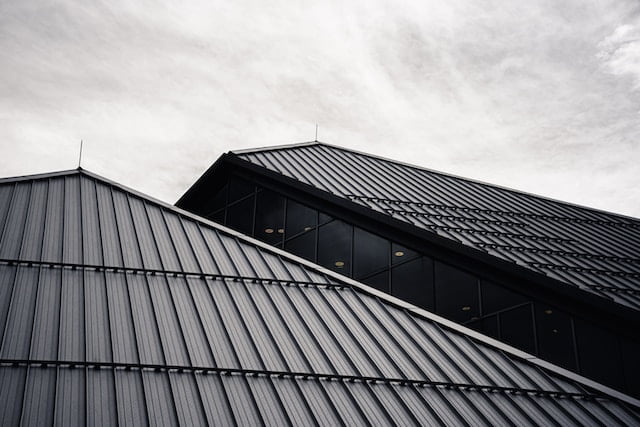Different Types of Metal Roofing and Its Uses
Metal roofing has become a popular choice for homes and buildings. A wide variety of options are available, and each has its advantages.
Steel metal roofing is the most common option for commercial and residential builds. It has impressive durability and can handle several different weather conditions.
Steel
There are several different metal roofing types, all with pros and cons. Choosing the suitable material for your roof is a crucial first step in getting a great-looking, energy-efficient, durable metal roof.
Steel is one of the most common metal roofs used on commercial buildings, and it’s also a popular choice for residential homes. Steel is a durable and cost-effective material that withstands harsh weather conditions, including rain, snow, hail, and high winds. Steel is also highly corrosion-resistant and able to withstand extreme temperatures.
Unlike aluminum, which can be dented by large hail, steel can resist damage from these conditions without compromising its durability. A good quality steel roof can last up to 50 years, making it a smart investment for homeowners.
Many homeowners choose to use steel roofs for their aesthetic appeal. They’re available in various colors and styles, from corrugated panels to standing seam roofs. Some can even be rolled into the shape of shingles, giving them a more traditional appearance. These roofs are very versatile and can work well with most architectural styles. Steel roofing is also more energy efficient than shingled roofs, as it reflects sunlight rather than absorbing it. This can save money on energy bills in warmer climates. In addition, metal roofing is 100% recyclable, which makes it an eco-friendly option for homeowners.
Aluminum
Aluminum is very malleable and can be shaped to fit various types of metal roofing and styles. It is often used in standing seam, corrugated panels, and shingles to give homeowners plenty of options for their roofing needs. As the lightest metal roof material, aluminum has one of the best strength-to-weight ratios. A thin piece of aluminum is often enough to do the job of a thicker steel or copper roof.
Another benefit of aluminum is its ability to resist corrosion from weathering and other environmental conditions. It does not mean red rust as steel does. Instead, it oxidizes to form an aluminum oxide protective coating on the surface. This is an essential advantage in corrosive environments like coastline areas.
As with all metal roofs, aluminum is non-flammable and fire-resistant. It is also not magnetic and does not draw electricity, so if your home is struck by lightning, you should be safe from fire damage. Metal roofs are also very sound-absorbing, reducing noise in the living space below.
One downside of aluminum is that it doesn’t hold its original silver-gray color well. Most homeowners prefer to use aluminum in a painted finish, which will retain its color much longer. As a result, you may have fewer color choices than other roofing materials. Typically, you’ll only find a few primary colors for aluminum roofing, such as light greens.
Copper
When properly maintained, a copper roof adds a classic look that can last more than 100 years. It pairs well with many different styles of buildings, from modern to older techniques.
Copper is a highly recyclable and fully sustainable metal. Its durability and longevity make it a popular option for architects.
It has high corrosion resistance, allowing it to withstand the elements. It is also a fire-resistant material, which helps protect the building below. Copper is a relatively lightweight roofing material. This means it can easily be installed on structures with lower pitches.
The natural green color of copper can blend well with surrounding building materials and landscapes. The sheen of new copper can also settle into a beautiful blue-green patina over time, which adds an appealing aesthetic to the structure. The iconic look of copper roofs can be seen on famous buildings.
A significant benefit of copper is its ability to reflect sunlight rather than absorb it. This can help reduce the energy costs of heating and cooling the home. This makes copper roofs an excellent choice for those looking to minimize their environmental impact.
Zinc
Zinc metal roofing is an eye-catching material gaining popularity for its durability and longevity. Its ability to form a patina over time protects it from rust and weathering. The patina is also self-healing, meaning that if the roof is scratched, it will heal itself to remove any marks. It comes in various finishes, making it suitable for buildings of all styles. This includes pigmented and natural zinc, which can create a rustic look or complement period properties.
Zinc is also environmentally friendly, as it has a lower melting point than other metals and requires less energy. It can also be recycled without losing its physical and chemical properties. This makes it an ideal roofing option for sustainable construction projects.
A zinc roof is durable and long-lasting, with an average lifespan of 80 to 100 years. However, this does make it more expensive than other metals, such as copper. Also, if the zinc is not installed correctly, it can cause problems such as leaking.
Another issue is that zinc is noisy when it rains, disturbing those living underneath. To minimize this, foam spacers can separate the zinc from the roof base. This will reduce the noise and make it more comfortable to live under.




